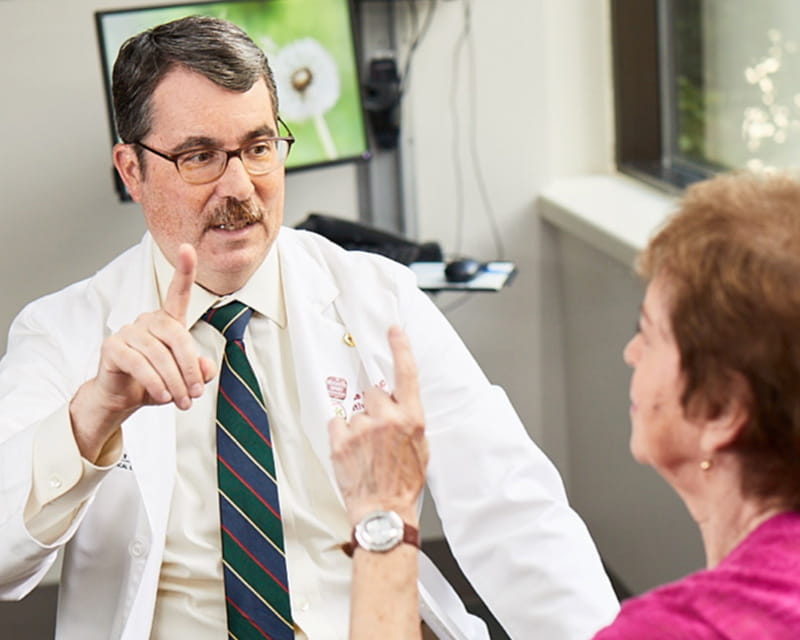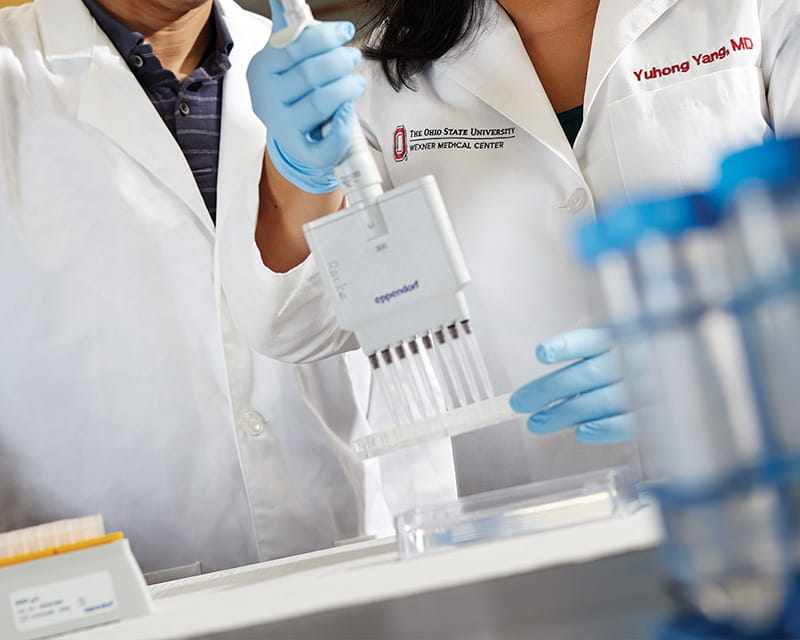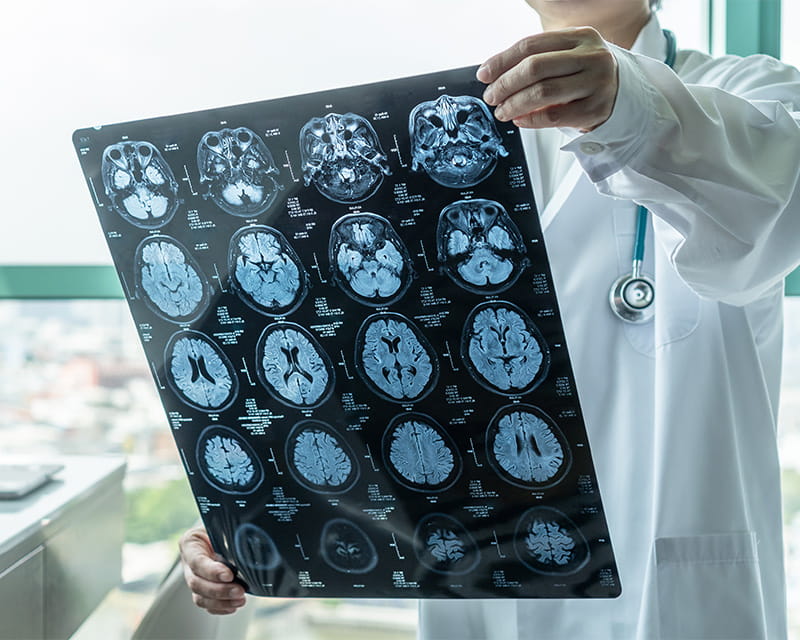
Ohio State researchers identify new biomarkers that differentiate Lewy body dementia from Alzheimer’s and Parkinson’s
 Ohio State University Wexner Medical Center advances understanding of brain signals, how they cause movement disorders and how to regulate them
Ohio State University Wexner Medical Center advances understanding of brain signals, how they cause movement disorders and how to regulate themNeurosurgeons and neuroscientists at The Ohio State University Wexner Medical Center’s Parkinson’s and Related Movement Disorders Division are part of a huge milestone in personalizing treatment for Parkinson’s disease.
The Ohio State team is among the first in the nation and the first in Ohio to implant a new deep brain stimulation (DBS) device from Medtronic that combines sensing and directional technology. This optimizes stimulation for each patient’s specific symptoms and anatomy.
“This represents a major advancement in our ability to understand the brain signals associated with neurodegenerative disorders,” says Aristide Merola, MD, PhD, a former neurologist at the Ohio State Wexner Medcial Center.
The ability to more precisely individualize DBS means patients can expect an improved quality of life and fewer side effects, says Dr. Merola, director of Ohio State’s Center for Parkinson's Disease and Other Movement Disorders.
Medtronic’s SenSight Directional Lead System is FDA-approved to treat patients with Parkinson’s disease, essential tremor, dystonia and epilepsy.
The directional DBS works with Medtronic’s Percept PC neurostimulator to capture a patient’s brain signals and provide objective data to better understand how medication or stimulation changes affect the patient. The technology enhances the detection of local field potentials — small electrical signals generated by the brain that are 1 million times smaller than DBS stimulation pulses.
“The ability to record and identify the patient’s brain activities, along with directional capabilities to steer the currents of the electrodes, allows us to maximize the therapeutic benefits and minimize the side effects for our patients,” says Brian Dalm, MD, a neurosurgeon in the Ohio State Wexner Medical Center Department of Neurological Surgery.
At the Ohio State Wexner Medical Center, patients receive DBS treatment at the Center for Neuromodulation.
“With a combined neurology and neurosurgery team, we work together to identify patients, prepare them for surgery, and handle all of their postoperative programming needs,” Dr. Dalm says.
During a DBS procedure, electrodes are implanted into the brain and connected to a small, pacemaker-like device placed under the skin of the chest. The device sends electrical pulses to specific points in the brain to calm abnormal signals that control movement. This can reduce disabling symptoms and restore physical function.
At The Ohio State University, this new directional and sensing technology is just the latest evolution in DBS treatment. Earlier advances include using:
The new Medtronic directional and sensing DBS technology can be used with tractography and robotic DBS lead placement, Dr. Dalm says.
“We continue to utilize all these modalities as we would for a standard DBS case,” he says. “The new Medtronic technology will enhance the capabilities of the device after it is implanted.”
A decade of research at the Ohio State Wexner Medical Center and other institutions finds that the results of DBS stimulation are inextricably tied to the specific stimulation site deep within the brain.
The ability to pinpoint stimulation currents in exact directions provides the best outcome. When stimulation is less targeted, patients could experience unwanted side effects.
“This is a critical step to maximize DBS clinical results and inform the development of innovative strategies for the management of Parkinson’s disease and other neurological conditions,” Dr. Merola says.
Soon, patients with epilepsy and other movement disorders could also receive treatment with the new directional and sensing DBS technology.
“There is currently active research going on throughout the world to better understand how sensing the brain’s activity can be utilized to improve therapeutic outcomes, and this does not have to be limited strictly to essential tremor or Parkinson’s disease,” Dr. Dalm says.
As advances in personalization continue for DBS, doctors and patients can “expect therapy that is eventually more tailored to each individual patient’s physiology,” he says.
Tractography-based targeting and each patient’s individual brain activity will more accurately set stimulation parameters, he says.
“DBS in the future will likely move away from mostly anatomical placement of the lead to a more precise placement that provides the most accurate stimulation for each patient — based on the best intensity, rate and stimulation pattern for them.”

Ohio State researchers identify new biomarkers that differentiate Lewy body dementia from Alzheimer’s and Parkinson’s

Biomarker breakthroughs at Ohio State transform disease diagnosis, predictability and treatment

The Ohio State University Wexner Medical Center pushes boundaries for neurological care